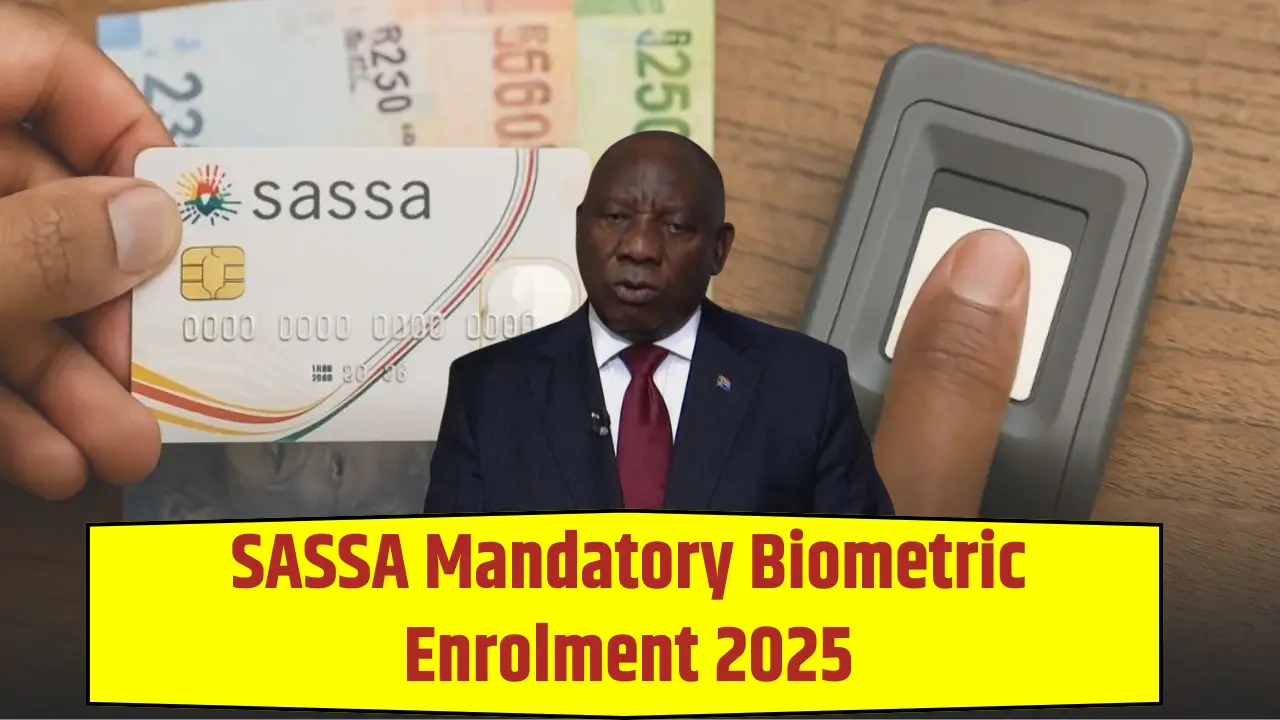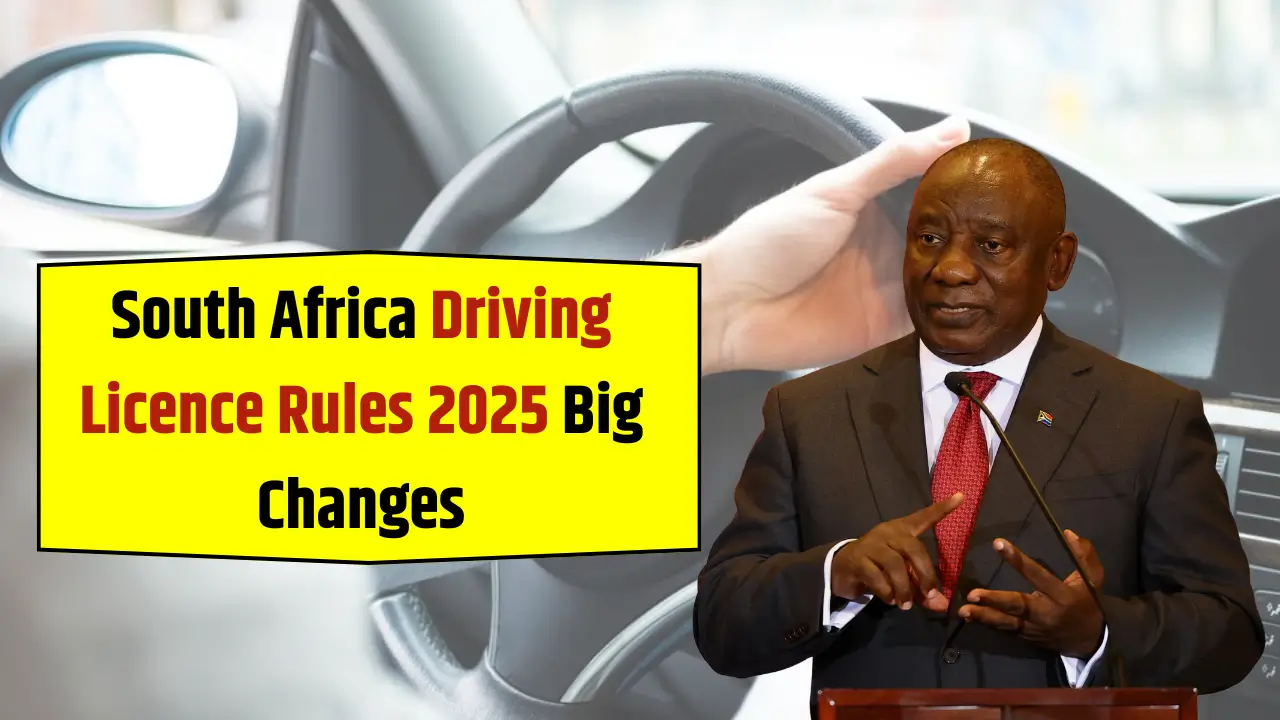SASSA Biometric Enrolment 2025: The South African Social Security Agency (SASSA) has launched a mandatory biometric enrolment system starting from September 1, 2025, to strengthen social grant administration and ensure that benefits reach the rightful recipients.
This new initiative requires all beneficiaries applying for or renewing social grants to undergo biometric verification, which includes fingerprint scans or facial recognition.
The aim of this biometric enrolment is to curb fraud, prevent multiple claims by the same person, and enhance the integrity of the grant system. It represents a significant modernisation effort for one of South Africa’s most crucial social support programmes.
Failure to comply with this enrolment requirement may result in cancellation or suspension of grant payments, putting vulnerable individuals at risk of losing essential income.
Why Biometric Enrolment Is Important
SASSA serves millions of South African citizens with various social grants, including the Older Persons Grant, Child Support Grant, Disability Grant, and Social Relief of Distress.
However, over time, the system was challenged by fraudulent claims and identity theft, leading to the disbursement of funds to ineligible or impersonating individuals.
The introduction of biometric technology has the following benefits:
- Accurate identity verification to ensure grants are paid only to eligible individuals.
- Prevention of multiple claims by a single person under different identities.
- Efficient and faster verification processes at grant offices.
- Reduction in administrative fraud and abuse helping protect the sustainability of social grant funds.
Biometric enrolment represents a robust security measure making the grant system safer and more reliable for genuine beneficiaries.
What Beneficiaries Need to Know About the SASSA Biometric Enrolment Process
Starting September 2025, all new applicants and existing beneficiaries renewing or re-registering for social grants must complete biometric enrolment. The process involves:
- Fingerprint scanning: Beneficiaries place their fingers on a digital scanner to capture unique fingerprint patterns.
- Facial recognition: A digital photograph is taken to compare with official identity documents for extra verification.
SASSA has coordinated with the Department of Home Affairs to cross-check biometric data against national ID records. In cases where biometric data does not match, beneficiaries will be required to update or correct their identification details to avoid delays or cancellations.
Steps to Complete Your SASSA Biometric Enrolment
To avoid the risk of your social grant payments being stopped, follow these essential steps carefully:
| Step No. | Action | Details |
| 1 | Visit the nearest SASSA office | Go to designated offices where biometric devices are available. |
| 2 | Bring necessary documents | South African ID, proof of address, grant application forms, and any existing grant cards. |
| 3 | Complete biometric scanning | Allow SASSA staff to capture your fingerprints and facial image. |
| 4 | Verify your details electronically | Confirm your identity is correctly recorded and linked to the grant. |
| 5 | Keep confirmation receipt | Obtain proof of enrolment or successful update for your records. |
SASSA has committed to rolling out biometric systems in approximately 80% of its offices nationwide by September 2025 to ensure accessibility.
What Happens If You Fail to Enrol Biometrically?
Failing to comply with the biometric enrolment requirements can lead to serious consequences such as:
- Suspension of grant payments until biometric verification is completed.
- Temporary hold or cancellation of social grant benefits if enrolment is not done within the specified timeframe.
- Ineligibility to apply or renew grants without biometric registration.
These measures are necessary to protect the social grant system but also highlight the urgency for beneficiaries to participate proactively. Special attention is put towards elderly and disabled recipients who may need assistance with the biometric process.
Challenges and Solutions in Implementing Biometric Enrolment
While biometric enrolment promises improved security, some challenges include:
- Accessibility issues in rural or hard-to-reach areas with limited internet or technology infrastructure.
- Concerns from elderly or disabled beneficiaries uncomfortable with technology.
- Accuracy of facial recognition technology in scenarios like mask-wearing or people with disabilities affecting biometric capture.
To address these issues, SASSA has engaged in:
- Comprehensive training of frontline staff to assist and manage enrolments sensitively.
- Decentralising enrolment centres and mobile units to reach remote communities.
- Offering alternative methods for beneficiaries unable to use fingerprints, such as fingerprint alternative checks and enhanced facial recognition.
- Awareness campaigns to educate beneficiaries about the necessity and safety of biometric enrolment.
Biometric Enrolment and Social Grant Types
The biometric enrolment applies to the following key SASSA grants:
| Social Grant Type | Description | Biometric Enrolment Required? |
| Older Persons Grant | Monthly pension for citizens aged 60 and above | Yes |
| Child Support Grant | Support for children from low-income families | Yes |
| Disability Grant | For people with permanent disabilities | Yes |
| Foster Child Grant | Support for foster parents caring for children | Yes |
| Care Dependency Grant | For those caring for mentally or physically disabled children | Yes |
| Social Relief of Distress | Temporary assistance for distressed individuals | Yes |
Each grant has strict enrolment guidelines and beneficiaries must complete biometric verification to remain eligible for continuous payments.
How Biometric Enrolment Helps Fight Fraud
Before biometric enrolment, SASSA struggled to eliminate fraud caused by phantom beneficiaries and impersonations. The biometric system:
- Links biometric data to official identity records preventing duplicates.
- Enables real-time verification at point of grant collection or application.
- Detects suspicious activities such as multiple grants tapping by one person.
- Triggers corrective action such as suspension or cancellation of fraudulent claims.
This strengthens public trust in the social grant system and ensures funds support those who truly need them.
What to Do If You Encounter Problems During Enrolment
If you face issues, such as biometric mismatches or denied access:
- Visit your nearest SASSA office for assistance with ID updates or re-submissions.
- Contact the SASSA customer support hotline for guidance.
- Seek help from community social workers or grant administrators who assist elderly or disabled.
- Ensure your biometric information is complete and accurate; report any lost or stolen IDs promptly.
Being proactive reduces interruptions to grant payments and secures continued support.
Conclusion
The SASSA Biometric Enrolment initiative in 2025 marks a major step forward in securing and modernising South Africa’s social grant system.
While it demands a commitment from beneficiaries to comply and enrol biometrically, these measures are necessary to ensure the social protection net remains effective and sustainable.
By following the outlined steps closely and seeking help when needed, beneficiaries can avoid disruptions or cancellations of their vital income support. This biometric enrolment system fortifies social grant delivery to empower and protect South Africa’s most vulnerable communities.
FAQs
Q1: What is SASSA biometric enrolment?
It is the mandatory process of capturing fingerprints and facial recognition to verify a beneficiary’s identity for social grant applications and renewals.
Q2: Who must undergo biometric enrolment?
All new and existing social grant applicants and recipients starting September 1, 2025, must complete biometric enrolment.
Q3: What documents are needed for biometric enrolment?
A valid South African ID, proof of address, and grant application or card are required to complete the enrolment.
Q4: What happens if I don’t enrol biometrically?
Failure to enrol may result in suspension or cancellation of your social grant payments.
Q5: How can elderly or disabled beneficiaries get assistance with biometric enrolment?
SASSA provides trained staff, mobile enrolment units, and community social workers to support beneficiaries facing difficulties.















